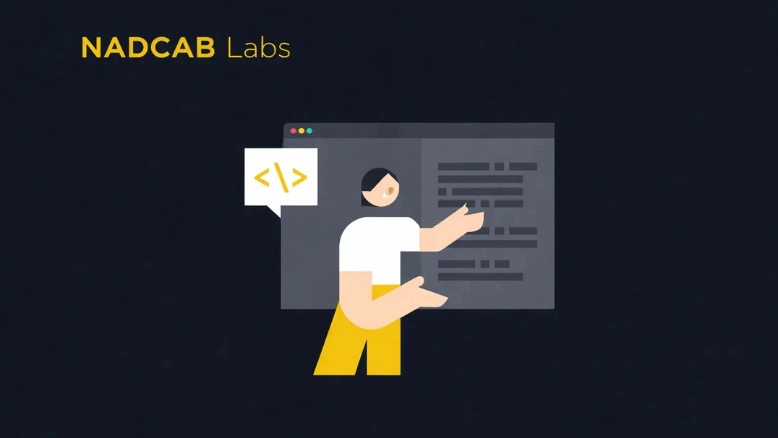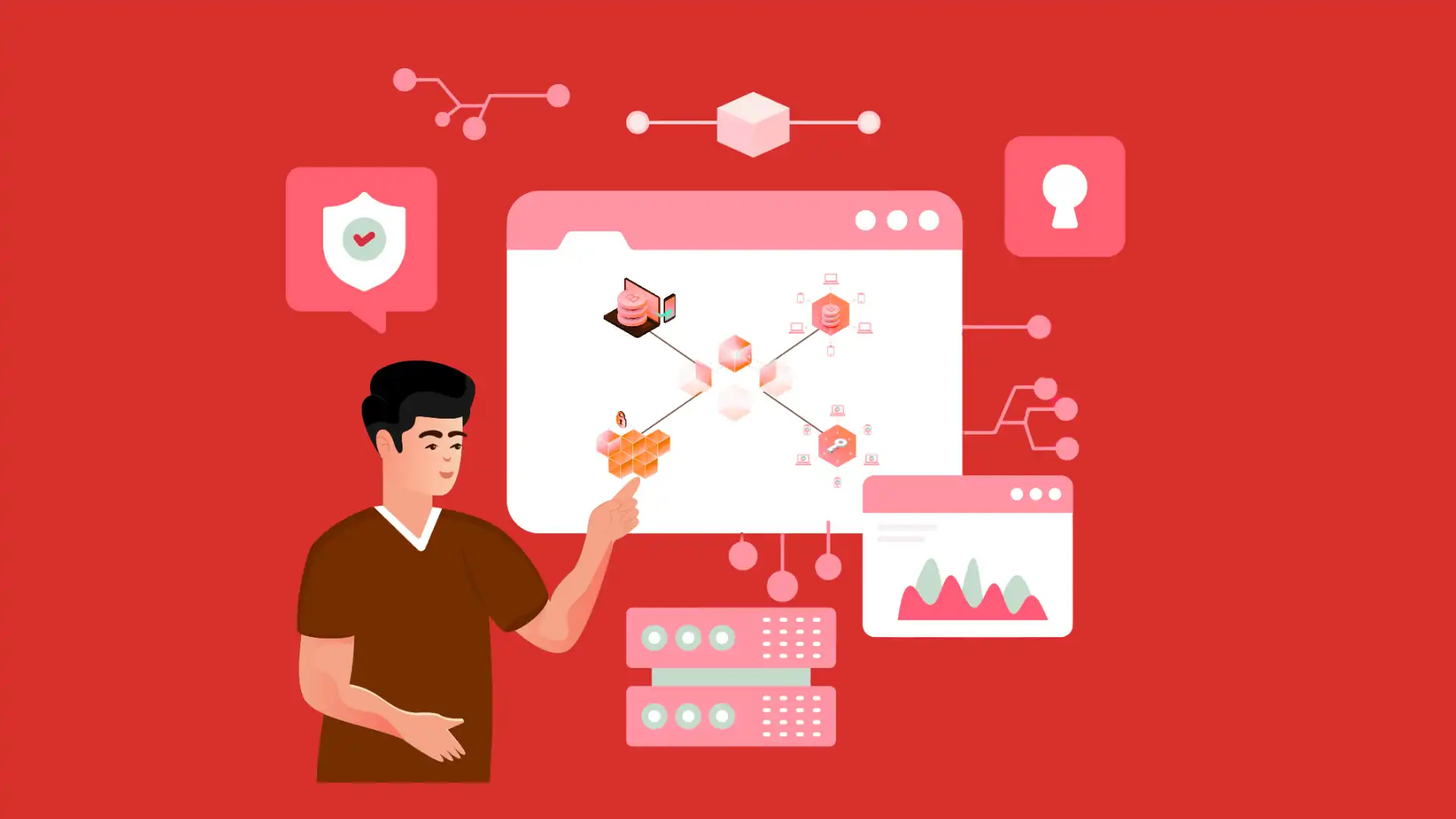Blockchain technology continues to evolve, offering more advanced solutions that push the boundaries of decentralization, security, and scalability. While Layer 1 and Layer 2 blockchains have laid the foundation for many blockchain applications, the emergence of Layer 3 blockchains introduces a new era of possibilities. These innovative solutions address the complexities of decentralized applications (DApps), interoperability, and user experience, offering a brighter future for the decentralized ecosystem.
In this comprehensive guide, we’ll explore what Layer 3 blockchains are, how they differ from Layer 1 and Layer 2, and their potential role in shaping the next generation of decentralized technologies. We will also look at how Layer 3 can enhance user experiences and address the challenges that blockchain faces today.
What Are Layer 3 Blockchains?
Layer 3 blockchains are the next step in the evolution of decentralized technologies. While Layer 1 blockchains like Bitcoin and Ethereum handle core blockchain functions, and Layer 2 solutions improve scalability and transaction efficiency, Layer 3 focuses on applications and advanced functionalities. Essentially, Layer 3 works as the application layer, built on top of Layer 1 and Layer 2 networks.
Layer 3 blockchains aim to support decentralized applications (DApps) by providing specialized features that enhance privacy, cross-chain communication, and improved user interfaces. These solutions address challenges related to scalability, privacy, and the integration of blockchain with real-world applications.
How Layer 3 Blockchains Differ from Layer 1 and Layer 2
To understand the importance of Layer 3, it’s helpful to look at the foundation of blockchain architecture and how Layer 3 fits into the broader picture. The traditional blockchain model consists of multiple layers, each with its distinct purpose.
-
Layer 1: The Foundation
Layer 1 refers to the base protocol and infrastructure of a blockchain. It is responsible for processing transactions, storing data, and maintaining the security of the network. Examples of Layer 1 blockchains include:
- Bitcoin: The first cryptocurrency, focused on providing a secure and decentralized method of transferring value.
- Ethereum: A smart contract platform that enables developers to create decentralized applications on its blockchain.
Layer 1 blockchains are crucial for the overall security and integrity of the blockchain ecosystem, but they often face limitations in terms of scalability. To address these limitations, Layer 2 solutions are developed.
Layer 1 Blockchain Development services typically focus on creating the infrastructure for secure and scalable networks. For instance, a layer 1 blockchain development company may work on designing a new blockchain protocol or improving an existing network’s functionality. A Layer 1 Blockchain Developer plays a critical role in building and maintaining the core architecture of a blockchain, ensuring its performance and security.
-
Layer 2: Scaling and Speed
Layer 2 solutions are built on top of Layer 1 blockchains to address scalability and transaction speed. These solutions improve the throughput of transactions and reduce congestion on Layer 1 blockchains. Popular examples of Layer 2 solutions include Optimistic Rollups and ZK-Rollups on Ethereum.
A Layer 2 Blockchain Solution aims to enhance the performance of Layer 1 blockchains by taking some of the transaction load off the main blockchain and executing them off-chain. This helps in processing transactions more efficiently, which is vital for scaling blockchain systems.
-
Layer 3: The Application Layer
Layer 3 is where the magic happens in terms of decentralized applications and user experience. It interacts with Layer 1 and Layer 2 to offer enhanced functionalities, such as privacy, cross-chain interoperability, and decentralized application (DApp) support. By building on the infrastructure provided by Layer 1 and Layer 2, Layer 3 enables more sophisticated applications to thrive in a decentralized ecosystem.
Layer 3 Blockchain Solutions can support features like zero-knowledge proofs (ZKPs) to ensure transaction privacy, advanced smart contracts, and interoperability between multiple blockchain networks. These applications can range from decentralized finance (DeFi) platforms to NFT marketplaces, gaming ecosystems, and beyond.
Why Layer 3 Matters for Decentralization
One of the core principles behind blockchain technology is decentralization, which aims to eliminate intermediaries and give control back to users. Layer 3 blockchains are a key part of this movement. They provide a platform for decentralized applications (DApps) to function without relying on central authorities. This supports a more decentralized and user-driven ecosystem, where users control their data and interactions.
As more applications transition to the blockchain, Layer 3 plays an essential role in enabling these applications to run smoothly. By offering better privacy features, faster transaction speeds, and seamless interoperability, Layer 3 brings decentralized applications to the forefront of blockchain innovation.
Improving User Experience with Layer 3
A major challenge with existing blockchain solutions is their complexity and usability. Many blockchain applications, especially those in the DeFi space, require users to have a certain level of technical expertise to interact with them. Layer 3 solutions aim to simplify the user experience by offering improved interfaces, privacy, and more accessible tools for interacting with decentralized applications.
Layer 3 can enhance the Layer 0 Blockchain Solution, a term that refers to the underlying technologies and protocols that facilitate communication across multiple blockchains. This is particularly important for achieving true interoperability between different blockchain networks. By enabling seamless cross-chain interactions, Layer 3 helps users interact with a wide range of decentralized platforms without needing to navigate complex processes.
Applications of Layer 3 Blockchain Solutions
The potential applications of Layer 3 blockchains are vast, spanning several industries and use cases. Some of the most promising areas where Layer 3 can make an impact include:
-
Decentralized Finance (DeFi)
Layer 3 is set to revolutionize the DeFi space by enabling faster, more efficient, and privacy-preserving financial transactions. Layer 3 blockchain solutions can help address the scalability issues of Layer 1 and Layer 2 by providing seamless and faster interactions between decentralized financial platforms. It can also enable cross-chain transactions, allowing users to move assets between different blockchains effortlessly.
-
Gaming and NFTs
Layer 3 can also play a key role in the gaming and NFT sectors. With Layer 3 solutions, players can easily trade assets between different games, creating a true multi-game economy. Additionally, Layer 3 can enable the creation of decentralized gaming platforms where users have more control over their data and in-game assets.
-
Supply Chain Management
Supply chain management benefits from the transparency and traceability offered by blockchain. Layer 3 can enhance these features by integrating data from multiple blockchains, allowing for a more comprehensive and efficient tracking system. This is especially important for industries like food safety, pharmaceuticals, and luxury goods, where authenticity and provenance are key.
-
Identity and Privacy Solutions
With rising concerns over data privacy, Layer 3 can help address these issues by enabling private and secure identity management. Layer 0 blockchain development services play a crucial role in establishing secure communication protocols that ensure privacy while maintaining decentralization. Layer 3 solutions can offer advanced cryptographic methods like zero-knowledge proofs, allowing users to prove their identity without revealing sensitive information.
Challenges of Layer 3 Blockchain Solutions
- Adoption and Integration: Layer 3 solutions are still in the early stages, and widespread adoption will require significant effort in terms of development, education, and integration. Many existing systems may not be compatible with Layer 3 solutions, requiring businesses to adopt new protocols.
- Scalability Concerns: While Layer 3 enhances user experience and privacy, scalability remains a challenge, especially as the demand for more complex operations grows. Solutions need to be optimized to handle large-scale transactions without compromising performance.
- Security Risks: With the added complexity of cross-chain interoperability and privacy features, there may be new security risks. Ensuring that Layer 3 solutions are secure and resistant to attacks is essential for maintaining trust in decentralized networks.
The Future of Layer 3 Blockchains
As blockchain technology continues to mature, Layer 3 will play an increasingly important role in shaping the future of decentralization. By enhancing user experience, providing privacy solutions, and enabling seamless interoperability, Layer 3 has the potential to unlock a new era of decentralized applications.
With the continued development of Layer 0 Blockchain Solution and Layer 2 blockchain solutions, Layer 3 blockchains are set to become a critical component of the decentralized web, offering new possibilities for industries, developers, and users alike.
Start Using Layer 3 Blockchain Today!
As the technology progresses, we can expect to see more widespread adoption of Layer 3 solutions, helping to overcome the challenges of existing blockchain layers and opening up new opportunities for innovation across multiple sectors. Whether it’s in finance, gaming, supply chains, or privacy, the potential applications of Layer 3 are vast, and we are only scratching the surface of what is possible in this exciting new era of blockchain technology.







